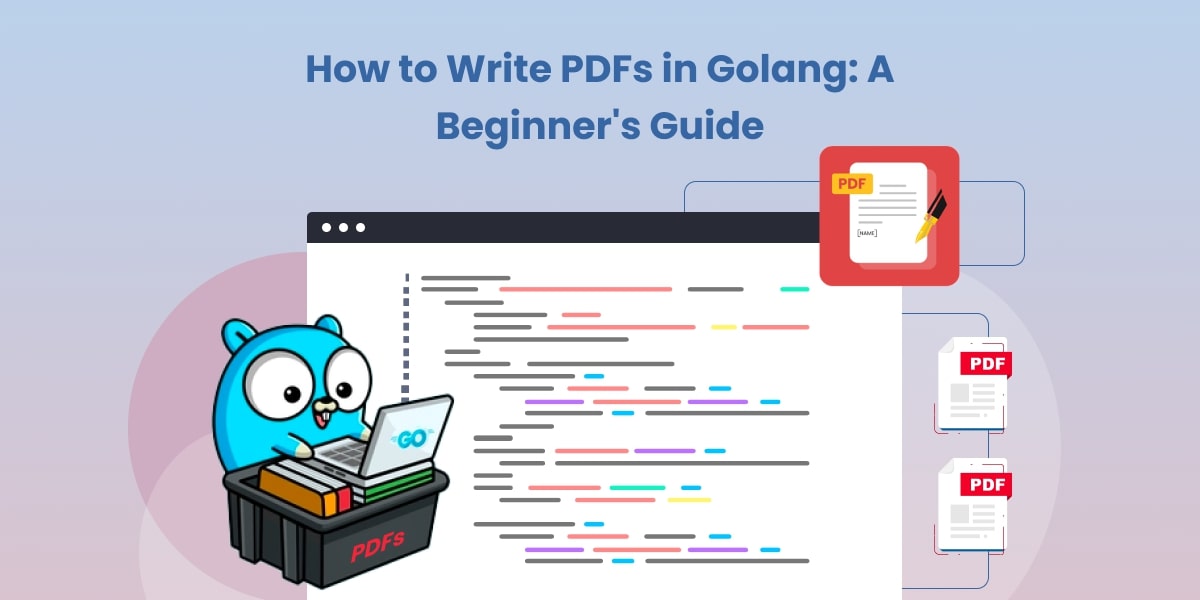Scaling PDF Generation: Handling Large Volume Document Processing
Are you struggling with generating PDF documents at scale? Does your business require handling large volumes of document processing, but you find it overwhelming? Fear not! In this article, we will explore how to scale PDF generation and efficiently manage the generation of large volumes of documents.
Introduction
In the modern era of technology, where digital processes dominate, the generation of PDF documents has become a routine task for businesses operating in diverse industries. PDFs have gained immense popularity as they offer universal compatibility and robust security features, making them an ideal choice for creating a wide range of documents such as invoices, reports, contracts, and more. However, as your business expands and the number of documents multiplies, managing the process of PDF generation can quickly become an overwhelming challenge.
The Challenge of Large Volume Document Processing
Handling a large number of PDF documents manually can quickly become overwhelming and prone to errors. However, as your business expands and you find yourself dealing with thousands or even millions of documents, it becomes essential to implement automation and efficient tools to streamline the process.
Scaling PDF generation is the solution to efficiently manage a high volume of PDF documents. This involves automating the generation process, optimizing performance, and ensuring that the system can handle the increased workload without sacrificing quality.
By implementing automation, you can eliminate the need for manual intervention in generating PDF documents. This not only saves time but also reduces the risk of human error. With automation, you can define specific rules and workflows to generate PDFs based on predefined templates or data sources. This allows for consistent and accurate document generation, regardless of the quantity.
Optimizing performance is another crucial aspect of scaling PDF generation. As the number of documents increases, it’s important to ensure that the system can handle the workload efficiently. This may involve optimizing code, improving hardware infrastructure, or utilizing cloud-based solutions to distribute the processing load. By fine-tuning performance, you can generate PDFs at a faster rate, enabling your business to keep up with the growing demand.
Maintaining quality is paramount when scaling PDF generation. Despite the increased volume, it’s essential to ensure that each generated document meets the required standards. This includes preserving formatting, layout, and content accuracy. Implementing quality control measures, such as automated testing and validation processes, can help identify and rectify any issues before the final PDFs are delivered.
Meet UniDoc: Your PDF Generation Companion
UniDoc is an open-source Go library specifically designed for creating and processing PDF documents. It offers a wide range of features and functionalities that make PDF generation a breeze. Some key features of UniDoc include:
PDF Generation: UniDoc provides a simple and intuitive way to create new PDF documents from scratch or modify existing ones.
Text and Image Manipulation: You can easily add and edit text, images, and graphics in your PDF documents.
Table Support: UniDoc allows you to create and customize tables in PDFs, making it ideal for generating structured reports and invoices.
Encryption and Security: Ensure your sensitive documents remain secure by applying encryption and access control to your PDFs.
Font Embedding: UniDoc enables you to embed custom fonts into your PDFs, ensuring consistent and accurate rendering across different platforms.
Handling Large Volumes: Optimization Techniques
When dealing with large volumes of PDF generation, it’s essential to optimize the process to ensure efficiency and timely delivery. Let’s explore some optimization techniques to handle large volume document processing effectively.
Batch Processing: Divide the document generation process into smaller batches and process them concurrently. This approach significantly reduces processing time and allows better resource utilization.
Caching: Implement caching mechanisms for frequently used resources such as fonts, images, and graphics. Caching helps reduce redundant computations and speeds up the PDF generation process.
Streaming: Use streaming techniques to generate PDF documents on the fly and deliver them to clients without the need to store the entire document in memory.
Load Balancing: Distribute the PDF generation workload across multiple servers using load balancing techniques. This ensures that no single server is overwhelmed and can handle the load efficiently.
Real-World Use Cases
Let’s explore some real-world scenarios where scaling PDF generation is crucial:
E-commerce Platforms. E-commerce platforms frequently require the generation of various documents such as PDF invoices, shipping labels, and order summaries to provide a seamless experience for their customers. As the volume of transactions grows, the ability to efficiently handle document generation becomes increasingly crucial for ensuring smooth operations.
Financial Institutions. Banks, insurance companies, and financial institutions are faced with the daunting task of handling a significant volume of paperwork on a daily basis. This includes generating various types of documents such as account statements, insurance policies, and legal forms. In order to streamline their operations and improve efficiency, these organizations have turned to scaling PDF generation.
Government Agencies. Government agencies frequently need to generate PDF documents for various purposes such as citizen services, permits, and official communication. The ability to scale document processing is crucial in order to ensure that these services are delivered promptly and efficiently.
By utilizing PDF documents, government agencies can provide citizens with a standardized format that is widely accessible and compatible across different devices and platforms. This ensures that the information is easily readable and can be shared seamlessly.
Conclusion
Scaling PDF generation is a crucial aspect of handling large volume document processing for businesses and organizations. By leveraging the power of UniDoc, you can streamline PDF generation, optimize performance, and enhance overall efficiency.
In this article, we introduced UniDoc, a feature-rich Go library for PDF generation, and provided a code example to create a basic PDF document. We also explored optimization techniques and real-world use cases to illustrate the significance of scaling PDF generation.
Now, armed with the knowledge and tools to handle large volumes of document processing, you can empower your business to thrive in the digital world.



